As sustainability takes center stage, eco-friendly plastics are transforming industries once dominated by traditional plastics. These innovative materials offer strength, flexibility, and reduced environmental impact.
In this guide, we explore what eco-friendly plastics are, their advantages, key applications, and why they’re the smarter choice for your next custom project.
Emerging Innovations in Biodegradable and Recycled Plastics
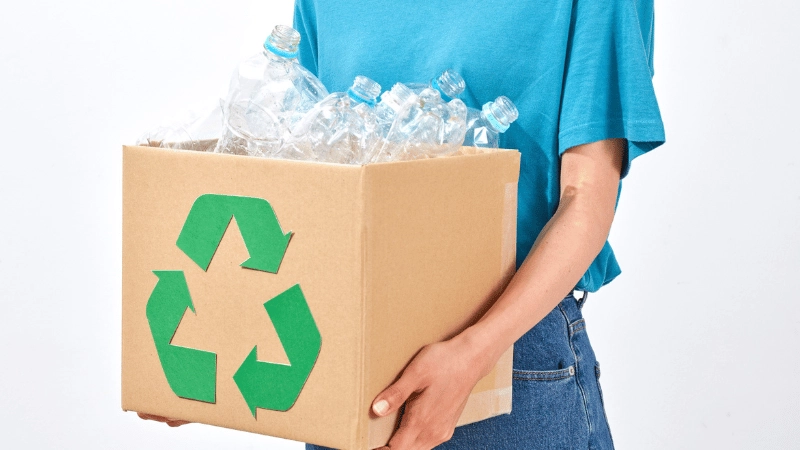
Next-generation biodegradable plastics are expanding beyond corn starch to algae, mycelium, and agricultural waste, creating more sustainable and efficient materials.
Researchers have developed bio-inspired structures (e.g., nacre-like composites) that can reduce performance fluctuations by up to 89.5% when recycling plastics.
The global biodegradable and bio-based plastics market is projected to reach over USD 33 billion by 2029, growing at a CAGR of over 20% from 2024.
Influences of Traditional Plastics

Plastics were first introduced to the public in the 1950s. They were such a commercial hit that they soon made it into everything. Since then, we’ve created a whopping 8.3 billion metric tons of plastics.
While the invention of plastic was revolutionary, it’s since become a great evil to the planet. That’s largely because plastics weren’t created from chemicals that decompose over time. As a result, most of the plastic created since then remains in the world.
If that’s not scary enough, we haven’t found a better way to dispose of them. According to a federal study, around 86% of plastics end up in landfills, while 5% and 9% end up recycled or incinerated, respectively.
Some schools of thought believe that these numbers will only get worse, with the total plastics in the world growing to 756 million metric tons per year.
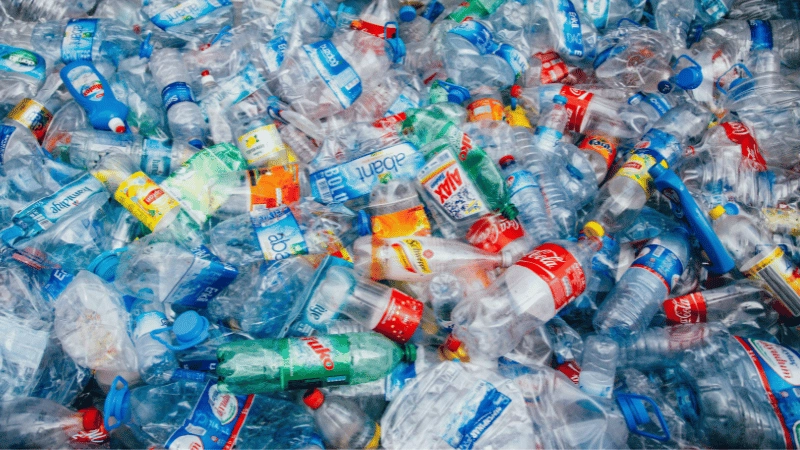
That said, the effects of these “forever” plastics haven’t gone unnoticed. Over the years, we’ve made little progress in curbing how we use and dispose of plastic.
But there’s even more good news on the horizon because more people, businesses, and governments are jumping on the bandwagon of eco-friendly plastics.
As the awareness of this new age of plastics grows, it’s only a matter of time before it overtakes and replaces the original, harmful plastics.
Inquire About Our Silicone and Plastic Products!
What Are Eco-Friendly Plastics?
Eco-friendly plastics sounds like a contradictory term, given how much damage plastics have done to the planet. However, given the versatility of plastics, it’s unlikely they’ll be ruled out completely.
As a result, one with little to no impact on the planet is our best bet for a replacement.
There are several forms of eco-friendly plastics. Some are made from the total or partial recycling of traditional plastics, which keeps the bad stuff that doesn’t degrade from polluting the environment.
But, there’s more—a different kind of eco-friendly plastics that are made from different, more sustainable materials. As such, they can be more effectively recycled and can break down when disposed of.

Three categories of plastics best fit these descriptions. They are:
Let’s learn more about them below:
Biodegradable Plastics
Biodegradable plastics are a versatile kind of conventional plastics that are made wholly or partially using chemical additives and non-renewable petroleum-based plastics.
This combination allows these plastics to break down easier and faster when exposed to heat, moisture, oxygen, and light.
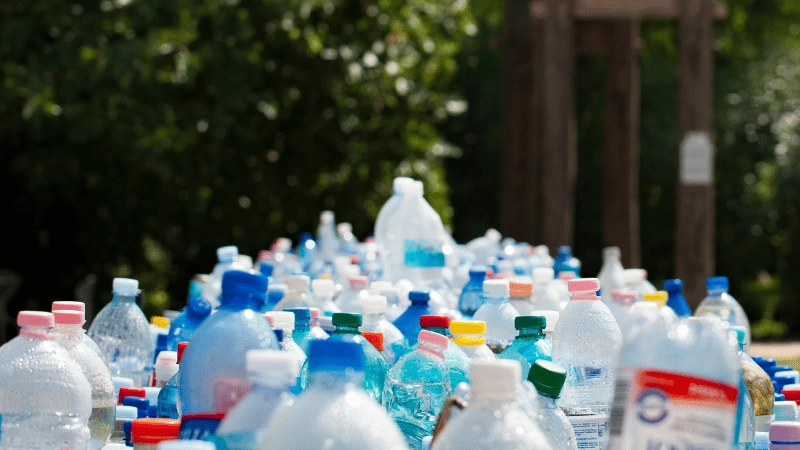
Some common examples of biodegradable plastics are polybutylene succinate (PBS) and polybutylene adipate terephthalate (PBAT). Both of them are used to produce films, the lining of paper cups, and product packaging.
Although petroleum-based materials may still be used in the production of biodegradable plastics, they are considered safer and more eco-friendly.
Biodegradable plastics fall into two unique categories of their own:
- Those made from petrochemicals and biodegradable additives
- Those made from sustainable raw materials
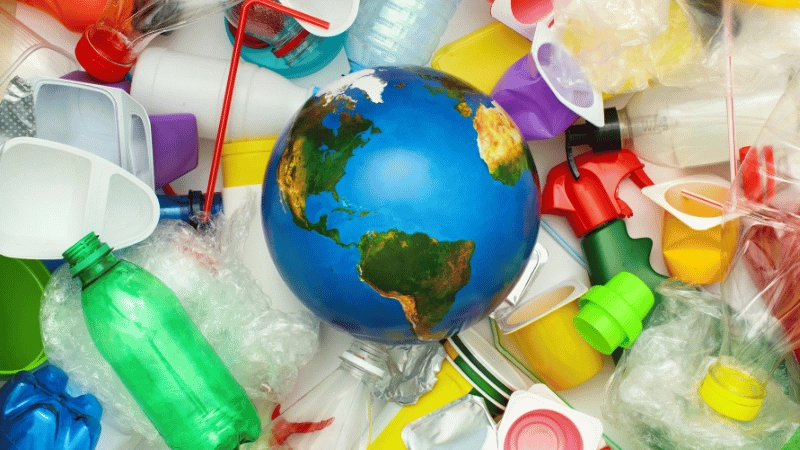
Bio-Based Plastics
Bio-based plastics are a class of conventional plastics made completely or partially from biological materials rather than fossils, like petrochemicals. They can be made using easily available natural resources like starches, vegetable oils, etcetera.
Since these aren’t petroleum-based plastics, they can help reduce our dependence on fossil fuels for plastic manufacturing. However, that doesn’t mean these plastics can be composted or will break down over time.
We still need to study the complete lifecycle of bio-based plastics to be sure they are eco-friendly to the end, beyond reducing fossil fuel consumption.
Recycled Plastics

A 2018 study shows that only a meager 9% of plastics are recycled. During the recycling process, petroleum-based plastics that have been used by consumers are repurposed.
For example, high-density polyethylene (HDPE) plastics like plastic bags can be recycled into park benches or planks for deckings. And plastic bottles made from polyethylene terephthalate (PET) can be turned into recycled plastic bottles.
Since recycled plastics almost always use traditional plastics, they don’t break down over time either.
However, they are considered eco-friendly because they help to extend the lifecycle of plastics, thus keeping them from polluting the environment more rapidly.
Inquire About Our Silicone and Plastic Products!
5 Advantages of Eco-Friendly Plastics
Here are five reasons eco-friendly plastics are better for us and the safety of the planet:
1. Reduces dependence on fossil fuels
Since plastics are very versatile, it means we need a lot of it. Crude oil is a key ingredient in the production of traditional plastics. That means a lot more drilling and refining, which only makes the environment worse.
Eco-friendly plastics require less or no oil to produce, which can help reduce the amount of oil we drill. That means less pressure on the planet and conservation of precious resources.

2. Cost-saving
Traditional plastics are cheaper to make, which is why they are produced in large quantities. Switching to eco-friendly plastics could mean even cheaper costs for manufacturers since they wouldn’t need petrochemical products and other costlier materials.
Additionally, eco-friendly plastics have a more efficient production process, which reduces running costs and, thus, the eventual prices of these plastics.
3. Lower animal-related risks
Plastic wastes are one of the leading threats to wildlife, especially as they are improperly disposed of and don’t break down, ever.
Eco-friendly plastics can lower this risk significantly, even when disposed of poorly since they are more biodegradable.

4. CO2 emissions reduction
Lots of water, raw materials, and electricity are required to produce traditional plastics. Even worse, the creation process creates lots of carbon dioxide (CO2) emissions that are harmful to us and the planet.
Eco-friendly plastics have a more efficient production process, which could significantly lower the emissions that enter our atmosphere.
Applications of Eco-Friendly Plastics
Eco-friendly plastics are just as versatile as traditional plastics and can be used across multiple industries, such as:
1. Automotive parts
Eco-friendly plastics can play a role in the automotive industry and help lead the way for a greener transportation system.
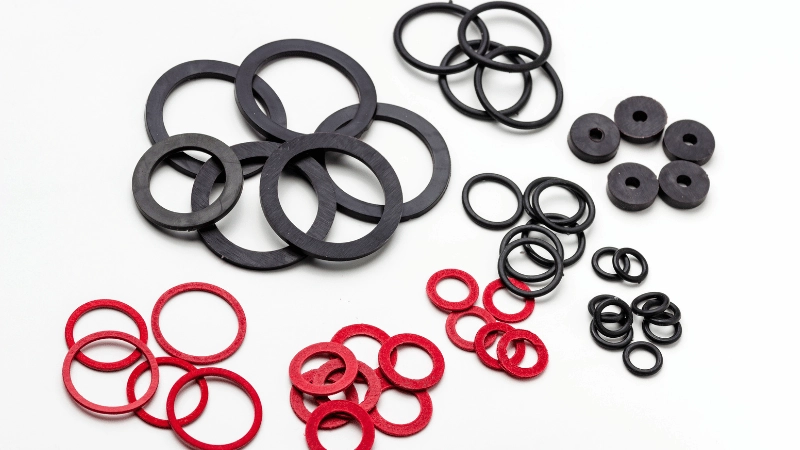
Due to its durability and lightweight, it can be used to create trim pieces, interior components, and parts like gaskets and seals.
2. Kitchen utensils
Eco-friendly plastics can replace traditional plastics for the production of kitchenware and utensils. They can be made into straws, plates, cups and so on, offering a green hat versatile alternative to the single-use plastics that are ruining the environment.
3. Agricultural films
The agricultural industry could benefit from eco-friendly plastics, as they can be used in a variety of ways, including crop protection, greenhouse covers, and mulching films.
This is helpful because traditional plastics leach harmful chemicals into the water and soil.

4. Plastic packaging
Plastic packaging is one of the largest uses of plastics, so having an eco-friendly option will go a long way. They can be used for producing wraps, bags, and other containers whilst also saving on plastic waste.
5. Textiles
Finally, eco-friendly plastics could make great alternatives for producing fabrics and fibers for upholstery, clothing, and other textile needs. That way, we get a better alternative to synthetic plastics like polyester.
Inquire About Our Silicone and Plastic Products!
Why Choose Eco-Friendly Plastics for Your Custom Need?
For manufacturers who use plastics for custom products, here are some advantages of switching to eco-friendly plastics:
1. Brand Reputation
Since eco-friendly plastics are more efficient and produced through sustainable processes, they can greatly improve brand appeal and loyalty amongst consumers.
2. Biodegradability
The core idea of eco-friendly plastics is to minimize pollution by creating plastics that break down over time or repurposing traditional plastic products to increase their usage. This also helps to reduce how much precious resources we use in general.
3. Part of a growing trend

Eco-friendly plastics are part of a growing trend in moving towards greener alternatives. Businesses that embrace this trend become more future-proof and partake in the changing market dynamics that give them a competitive edge.
4. Innovation
Eco-friendly plastics may lead to the creation of innovative designs, products, and production processes that result in unique options for consumers.
This could further lead to increased appeal and adoption of these plastics amongst manufacturers and consumers.
5. Regulatory compliance
As more consumers demand sustainable products and governments buy into the idea of a greener tomorrow, the laws regarding plastic use and production will change. Choosing eco-friendly plastics will help businesses stay on the right side of the law.
Inquire About Our Silicone and Plastic Products!
Conclusion
Eco-friendly plastics are the future of plastics and a much greener planet. Learning and investing in them early is also in the best interests of businesses, as these plastics are poised to be a major part of brand appeal and consumer demands in the years to come.
Choose Sustainable Silicone Over Traditional Plastics
Looking for eco-friendly alternatives to conventional plastics? Hongju Silicone specializes in durable, non-toxic, and reusable silicone products that reduce waste and support sustainability.
With custom manufacturing, low MOQ, and fast prototyping, we bring your green product ideas to life.
Contact us today to start your eco-friendly project!